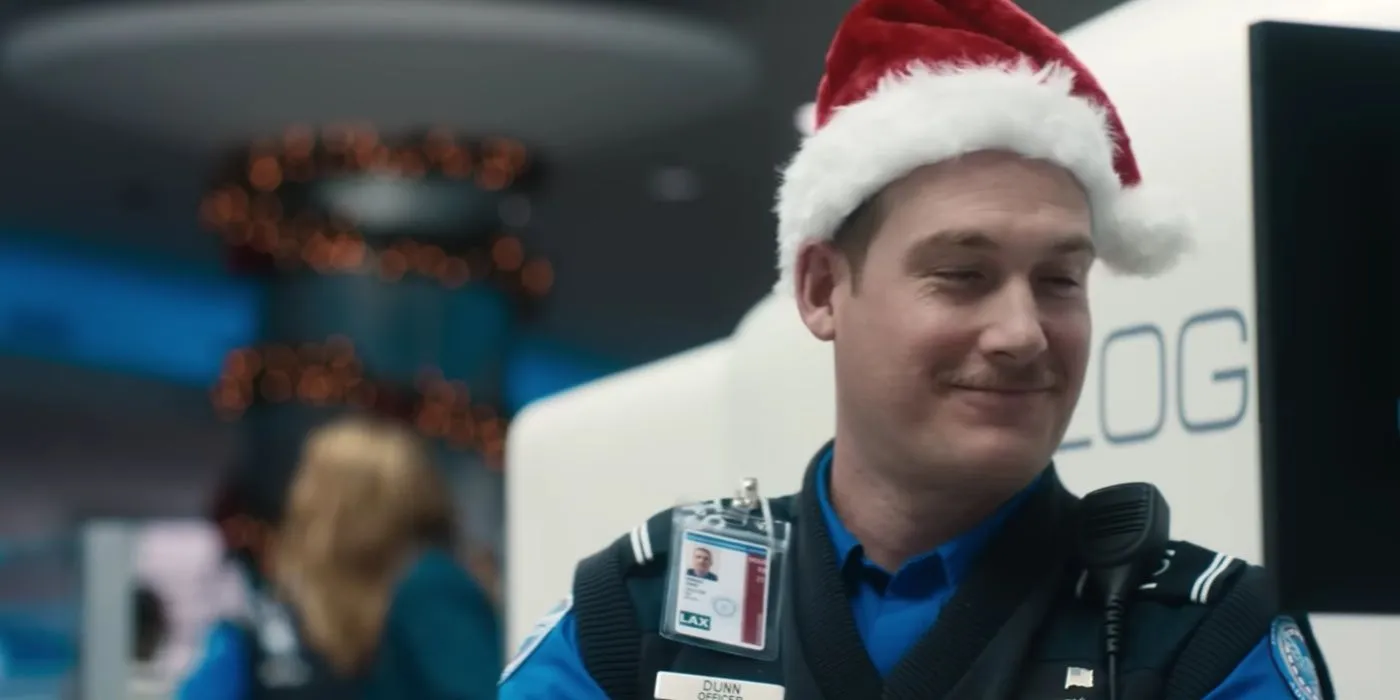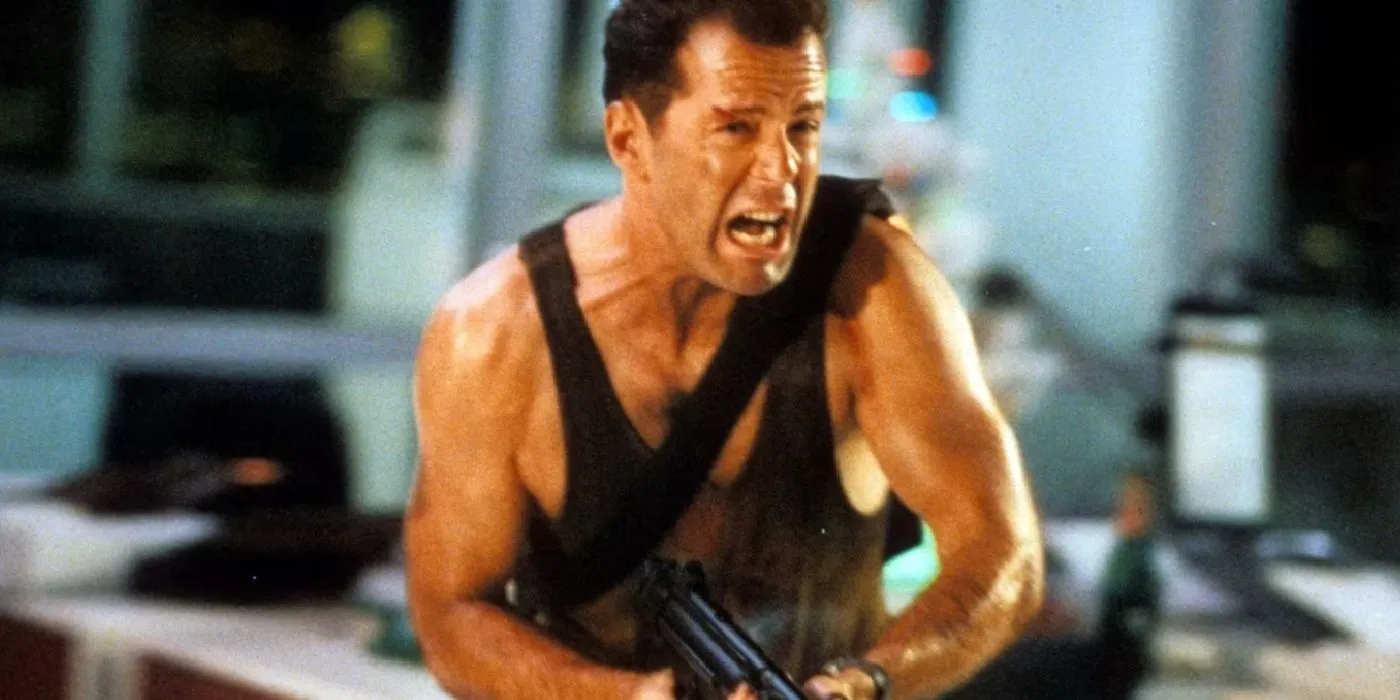
Warning: Major spoilers for Carry-On below! Thanks to its impressive streaming performance, a sequel to Carry-On is on the horizon. However, to avoid pitfalls that impacted the Die Hard franchise, a thoughtful approach is essential. The film stars Taron Egerton as a TSA agent who bravely confronts a dangerous situation instigated by Jason Bateman’s mercenary character attempting to smuggle a perilous item through airport security. Remarkably, Carry-On embraces its Die Hard parallels, featuring relatable protagonists who must protect their loved ones in confined environments, while a cunning antagonist always seems one step ahead.
The film currently holds an 85% rating on Rotten Tomatoes, marking it as a significant hit for Netflix. Taron Egerton has expressed interest in reprising his role in a hypothetical Carry-On 2 (as reported by Today), cautioning that the sequel must present a compelling premise: “It’s kind of like an extraordinary set of circumstances, so I think it would need a really innovative, creative idea to feel like a worthy idea for a sequel.”While the original Die Hard spawned multiple sequels, with Bruce Willis’ John McClane consistently caught in unexpected peril, Carry-On 2 must navigate its narrative carefully.
Avoiding the Superhero Trap: Taron Egerton’s Role
The Transformation of John McClane





In the finale of Carry-On, Ethan achieves his aspiration of becoming a police officer, which opens the door to further adventures. He could easily find himself embroiled in another tense situation reminiscent of Die Hard, whether it’s on a plane, a train, or even a hot air balloon. One of the film’s strengths lies in Egerton’s relatable portrayal of Ethan—a soon-to-be father striving for a promotion—embodying the essence of the everyman hero. Thus, Carry-On 2 must avoid the mistakes of the Die Hard sequels by not rendering Ethan invincible.
The Die Hard franchise lost its initial charm when McClane morphed into a generic action hero…
Initially, Die Hard was groundbreaking during an era dominated by larger-than-life characters like Arnold Schwarzenegger and Sylvester Stallone. Unlike these muscle-bound titans, McClane was portrayed as an ordinary person caught in extraordinary circumstances, embodying the underdog narrative that resonated with audiences. This concept is central to Carry-On. However, as the sequels progressed, McClane’s experiences escalated to the absurd, such as leaping onto a malfunctioning fighter jet in the fourth movie.
The sequels ultimately divorced themselves from what made McClane appealing, transforming him into an archetypal action figure. If a sequel is produced, it will need to adhere to a balance where Ethan remains relatable and suffers genuine consequences—when he gets hit, it should feel real; he shouldn’t act as though he’s invulnerable, mirroring McClane’s diminishing pain sensitivity in the later Die Hard films.
Consequences of McClane’s Invulnerability on the Franchise
The Devolution of John McClane

For actors, sequels offer the chance to delve deeper into their characters, similar to Sylvester Stallone’s evolution with Rocky Balboa. The best film series find ways to refresh their leads, but McClane’s characterization drifted increasingly away from its original concept with sequels. In films such as Die Hard 2 and Die Hard with a Vengeance, McClane’s irreverent, underdog spirit remained, but he appeared capable of enduring greater hardships.
https://www.youtube.com/watch?v/fZIxVPflOtM
He sustained injuries, yet he performed feats far beyond the capabilities of most men, such as leaping onto moving aircraft or outrunning a tsunami in a truck. By the last two iterations, McClane’s character had evolved into an individual who hardly seemed to feel injury at all, even when subjected to extreme trauma.
Notably, several prominent actors, including Frank Sinatra, Richard Gere, Burt Reynolds, and Clint Eastwood, turned down the opportunity to portray John McClane in the original Die Hard.
The McClane character depicted in later films bore little resemblance to the relatable figure audiences initially fell in love with. As the series leaned into increasingly grand spectacles, it sacrificed the rich characterization that defined the original. Willis’ light-hearted anti-hero transitioned into just another indestructible action star, the very thing he was meant to critique. Carry-On 2 must navigate this potential trap meticulously.
A Chance for Carry-On to Evolve
Finding Its Identity

While Carry-On successfully stands on its own as an engaging thriller, the narrative feels satisfying enough that it does not necessitate a sequel. Nevertheless, Ethan’s journey has ample potential to be expanded upon with the right creative direction. With the original Die Hard franchise having concluded following 2013’s A Good Day to Die Hard, there exists a void for a contemporary series that captures similar thrills. The Has Fallen franchise attempted to fill this gap but ultimately fell short of achieving sustained success.
|
Every Die Hard Movie |
|
|---|---|
|
Die Hard (1988) |
94% |
|
Die Hard 2: Die Harder (1990) |
69% |
|
Die Hard with a Vengeance (1995) |
60% |
|
Live Free or Die Hard (2007) |
82% |
|
A Good Day to Die Hard (2013) |
15% |
In Carry-On 2, Ethan’s character can be thrust into various exhilarating situations, yet, considering his TSA connections, an airborne disaster scenario seems like the most fitting direction for the storyline. This new franchise has the opportunity to resurrect the spirit of Die Hard while strategically avoiding the mistakes that ultimately hindered its success.
Source: Rotten Tomatoes, Today, Rotten Tomatoes




Leave a Reply